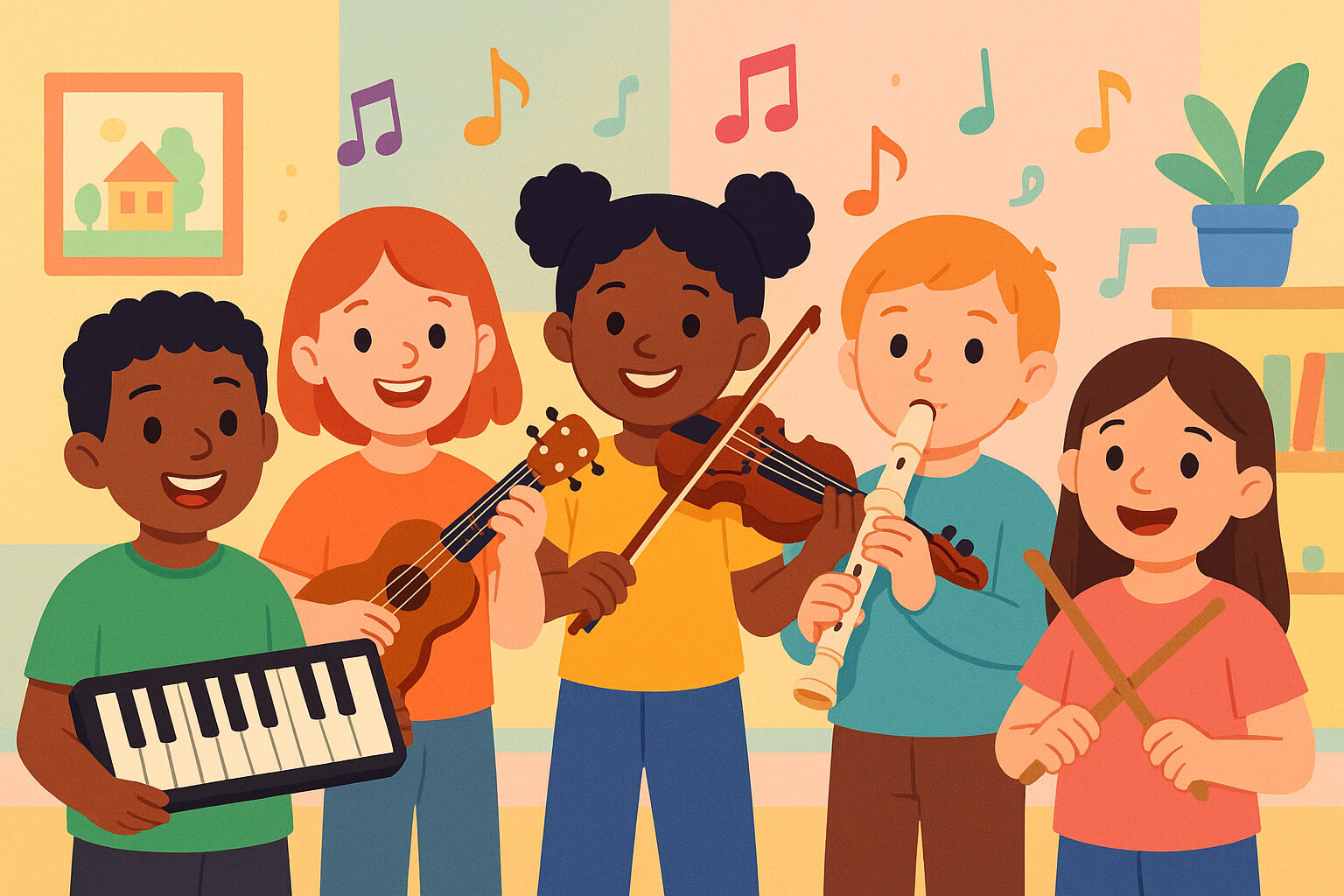Your draft is strong, clear, and informative. Below is an extended and enriched version of your article that adds more detail, guidance, and a warm, encouraging tone for parents. I’ve also integrated more nuanced advice to help readers make confident decisions.
What’s the Best Instrument for Kids to Learn First?
- Choosing a child’s first musical instrument is more than just a practical decision — it’s the beginning of a creative journey. The ideal starter instrument should spark curiosity, match the child’s age and physical ability, and provide a strong musical foundation.
- With options ranging from piano and ukulele to violin and drums, parents often wonder: Which instrument is best to start with? The answer depends on the child’s personality, interests, and developmental stage.
- Let’s explore the top beginner-friendly instruments for kids, what makes each one a great choice, and what factors to consider when making your decision.
1. Piano – The Ultimate Foundation Instrument
The piano is widely regarded as one of the best first instruments for children—and for good reason. It provides a clear, visual layout of notes and scales, making it easy for kids to understand pitch relationships and rhythm. No need to worry about tuning or embouchure; with a simple key press, children can immediately start exploring sound.
Benefits:
- Visual learning aid: The linear keyboard helps kids see how notes progress and chords are built.
- Instant gratification: Produces sound with minimal effort, which encourages continued practice.
- Strong theory foundation: Teaches melody, harmony, and rhythm simultaneously.
- Long-term versatility: Skills learned on the piano easily transfer to other instruments.
Resources:
2. Ukulele – Small Size, Big Fun
The ukulele is a great option for younger kids who might find a guitar too large or difficult to play. With only four nylon strings and a compact body, it’s easier on small hands and fingers. Plus, kids can quickly learn a few chords and start strumming along to songs.
Benefits:
- Kid-friendly design: Lightweight and sized for smaller hands.
- Quick results: Basic chords can be learned in a single session.
- Portable & affordable: Perfect for home or travel.
- Encourages singing and rhythm development.
Resources:
3. Violin – Perfect for Early Ear Training
While the violin can be challenging at first, it’s one of the best instruments for developing pitch accuracy and fine motor control. Many music educators recommend starting violin as early as age 4, especially since smaller-sized instruments are readily available for kids.
Benefits:
- Excellent for ear training: Helps develop relative pitch and intonation.
- Boosts discipline: Teaches patience and focus through precise hand positioning.
- Great ensemble opportunities: Opens doors to orchestras and group playing early on.
- Portable and classical in nature: A gateway to traditional and cultural music forms.
Pro tip:
- Early lessons with a teacher are recommended, as tuning and bowing techniques require guidance.
4. Drums – For Active, Rhythmic Learners
If your child is full of energy, loves tapping on things, or keeps time naturally with songs, drums might be the perfect fit. Learning drums builds coordination, strengthens timing, and introduces rhythm in a direct, hands-on way.
Benefits:
- Highly engaging: Great for kinesthetic learners and active kids.
- Improves coordination: Uses both hands and feet independently.
- Instant feedback: Drumming feels natural and rewarding.
- Supports all music styles: Rhythm is the backbone of all music genres.
Resources:
Noise tip:
- Consider electronic drum kits with headphones for home-friendly practice.
5. Recorder – Simple, Affordable, and Effective
Often used in elementary music programs, the recorder introduces wind instruments in a low-pressure, accessible way. It’s inexpensive, easy to clean, and doesn’t require reeds or embouchure like more complex woodwinds.
Benefits:
- Low cost & durable: Perfect for younger kids and school programs.
- Introduces breath control and phrasing.
- Great stepping stone: Lays the groundwork for future wind instruments like flute or clarinet.
- Encourages melody playing and note reading.
Good to know:
- Sound quality improves with practice—and with higher-quality plastic or wooden models.
Factors to Consider When Choosing:
Making the right choice involves balancing the child’s interests, capabilities, and goals. Here are key things to keep in mind:
1. Child’s Age & Size
- Choose instruments that fit your child physically. For example:
- Ages 4–6: Recorder, ukulele, violin (1/8 to 1/4 size), small keyboards.
- Ages 7–10: Piano, full-size ukulele, drums, beginner guitar.
2. Learning Style & Personality
- Does your child enjoy structure or freeform play?
- Are they visual, auditory, or tactile learners?
3. Long-Term Interest
- Expose kids to different sounds and instruments. If possible, let them try a few in person at a local music store or class before committing.
4. Noise & Space
- Acoustic drums take space and volume.
- Digital keyboards and e-drums allow for quieter practice.
5. Cost & Maintenance
- Some instruments are more budget-friendly and lower maintenance than others. Start small and upgrade if interest persists.
Complementary Learning Resources from RocketPages
Enhance your child’s learning with structured guides and free tools:
Conclusion: Choose the Instrument That Inspires
There’s no “best” first instrument for every child—only the right one for yours. Whether they’re drawn to the keys of a piano, the strings of a ukulele, or the beats of a drum set, the most important factor is that your child feels excited to explore and create.
Start small, stay supportive, and pair hands-on play with great resources. You’ll not only be choosing an instrument—you’ll be opening the door to a lifelong love of music.
